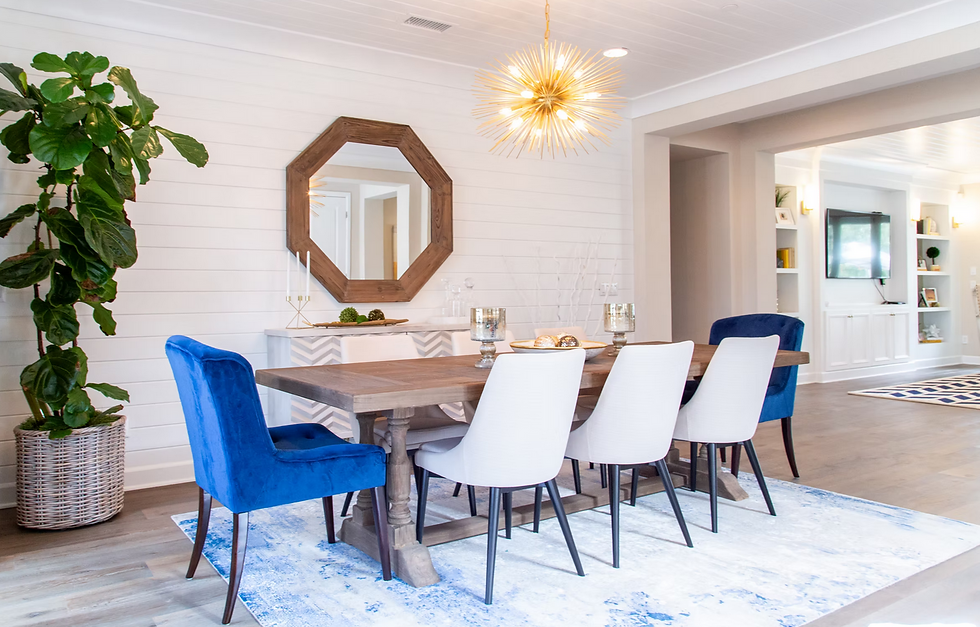Amazing Tips on How to Discuss Your Design Style With Home Pros
- Vision Interiors
- Jul 20, 2021
- 3 min read

If you are preparing to work with a specialist for a home project, whether that be an architect, landscape designer or interior decorator, communicating your preferences clearly and concisely can help your designer understand exactly what you want.
You will be better prepared to have these important conversations with your designer if you gather inspiration correctly and assess your personal preferences.
Create a Love List as well as a Not-for Me List
It is a good idea to take photos and ideas of what you like when you meet with interior designers. But have you ever considered making a list about the things that you don't enjoy? These dislikes, perhaps surprisingly, can also be crucial.
Try to get Visual
Interior designers are primarily visual. It makes sense therefore that images are the best way to convey your thoughts and feelings. This makes things simple and clear. For example, if "desert fashion" is southwestern with lots of natural wood and colorful fabrics, but your designer envisions more of a Palm Springs midcentury desert feel, conflict is possible.
However, once you are able to point to a photograph and say "I really like it" or "I don't like that look," your designer pro and you can quickly get on the same page. .
Include images that directly relate to your project
Gathering images of jobs you like and don't like is a great place to begin. For example, if you are going to work with a landscape architect or landscape designer, make sure to take photos of landscapes.
Our interior designer recommends that you look at photos of exteriors and whole-house plans if you're looking for an architect to help you with a home remodel. Look for photos of kitchens if you are redesigning your kitchen. We think you see the picture.
But, you can also include some less-on-topic photos
You don't have to include images that aren't directly related to your occupation, but they can still be a great example for a style you love or loathe. Images of lifestyle, food, and garden can provide a great example of color palettes. They can help your designer get a better understanding of your overall style than the job photos.
Be Choosy
When you fill your idea books with photographs, you will have the opportunity to choose as many photos as you like. Enjoy it! It's time to be picky when you are ready to return in for another appearance. Focus on the top 10-20 best examples in each category.
This will give your designer pro more images to look at and it will likely give you some practice in making design-related decisions. It will be easier to discuss your design strengths the more you use them.
Try to Get Specific
It is useful to be able to point at an image that you love or loathe, but it can lead to confusion and miscommunications if you don’t clearly state what you want or dislike about the space.
While you might be thinking about color palettes, your interior designer may be more focused on furniture style.
A note should be added to each image in your idea book. It should explain keywords and the reason you included it.
Take the following checklists and use them as a guide to help you decide how many you want to include in your own lists.
The Things You Love Checklist:
You should include the following features:
The NOT FOR ME Checklist
You are sensitive to certain colors or shades of color.
You deserve a huge pat on your back for getting this far. It can be difficult to define your style. But, it doesn't mean you have to. Your design professional will usually be there to guide you through the entire process. Your designer and you will have a better working relationship if you put more effort into the design.
If you are still having difficulty identifying your style after going through the exercises, you might want to think laterally: Are there restaurants, brands, or shops that reflect your love and hate?
This can add to your personality information if the designer is familiar with the locations you choose (or can find images of).
Remember that it is crucial that you communicate your preferences to your designer. However, once you have made your initial thoughts and feelings known, it is equally important to let go and allow your designer to come up with creative ideas.
All the things you love will be there. You might not love them all, but you can always find a way to make it your home. You may be surprised to discover that you love something that an interior designer has created.




Comments